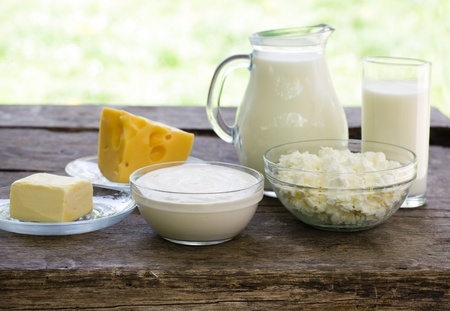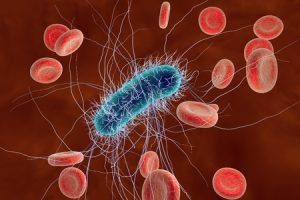
Natural antimicrobials are commonly being preferred by consumers over chemical preservatives according to ingredient trend studies (Smid and Gorris, 1999). Natural antimicrobials are regularly being isolated as extracts from plants or produced by microbial fermentation. Many of these are antimicrobial peptides. The bacteriocin called nisin is one such natural antimicrobial agent with activity against a wide variety of undesirable food borne (pathogenic) bacteria (Hurst, 1981; Delves-Broughton, 1990) but especially against Gram-positive types.
Nisin has been used as a preservative since the 1940s (Wan Norhana et al., 2012). It was approved as an additive, called E234 by the European Union in 1983 and received its GRAS status from the USA’s FDA in 1988 (Solomakos et al., 2008). In the regulatory situation, nicin is approved for use in a variety of cheeses and their spreads to prevent the germination of Clostridium spores and subsequent toxin production (Delves-Broughton, 1990).
Structure & Function
Nisin is a lantibiotic peptide, is thermostable, cationic and contains just 34 amino acid residues (Delves-Broughton, 2005). It is produced by the food grade dairy starter bacterium Lactococcus lactis subsp. lactis. It is synthesized by the bacterium as a preprotein before post-translational modification and then release. The peptide is extremely active against many Gram-positive bacteria such as Listeria monocytogenes, Staphylococcus aureus, Bacillus cereus, Lactobacillus plantarum, and Micrococcus luteus (Tong et al., 2014) and even against bacterial spores. Unfortunately, it will not inhibit the Gram-negative bacteria, such as E. coli and the Salmonella sp. without the addition of other agents.
Activity In Microorganisms
Nisin acts on other Gram-positive bacteria by interacting with a peptidoglycan precursor known as lipid II, which is located on the outer side of the plasma membrane. The binding complex created by lipid II and nisin forms a pore which causes the attacked bacterium to leak. This leads to cell death by releasing small intracellular metabolites and wrecking the proton gradient (proton motive force) required for energy production. The critical amino-acid residues in nisin are dehydroalanine and dehydrobutyrine which play a direct role by acting as electrophilic Michael acceptors toward nucleophiles in the cytoplasmic membrane (Liu and Hansen, 1990; Delves-Broughton, 2005).
The Gram-negative bacteria can resist nisin activity because the antimicrobial is unable to pass across the outer membrane (OM) that covers the cytoplasmic membrane and its peptidoglycan layer (Helander et al., 2000; Kopermsub et al., 2012).
Use In Processing
Nisin is used as a preservative in heat processed and low pH foods. It is commonly used in:-
-
Processed cheese
-
Plant-based sauces and dips
-
Chilled ready meals
-
Canned soups and sauces
-
Meat and poultry products
Nisin cannot be synthesised chemically, so the nisin-producing L. lactis bacteria are used for its synthesis. A nisin preparation is applied as a concentrate of dry material derived from the controlled fermentation of L. lactis.
The activity of nisin depends on the concentration of other substrates such as other proteins, fats and to some extent carbohydrates. Proteolytic enzymes or other additives such as titanium oxide and sodium metabisulphite have also been shown to influence behaviour (Delves-Broughton, 2005). When the antimicrobial is added directly to a food, its behaviour is highly influenced by the medium in which it serves because it diffuses throughout the food albeit slowly. However, encapsulation in protecting agents or in films has started to be explored as a way to optimise the agent’s behaviour (Gharasallaoui et al., 2015).
The efficacy of nisin is improved considerably in combination with other additives such as chelating agents (e.g. EDTA) especially against the Gram-negative bacteria. Magnesium ions help to stabilise the lipopolysaccharide layer of the outer membrane in these bacteria. However, EDTA binds such ions which increases their susceptibility (Nikkaido and Vaara, 1987).
International patents have been applied for to take advantage of the effects antimicrobial combinations can have using nisin. Another method using osmotic shock has been found to improve sensitivity of bacteria such as E. coli to nisin (Kordel and Sahl, 1986) by removing the outer membrane of such bacteria.
Nisaplin
Nisaplin is a commercial food-grade preparation of nisin. It’s used as a preservative like raw nisin in a wide range of food products—especially those that are chilled, high in moisture, or prone to spoilage by Gram-positive bacteria.
Active Ingredient:
-
Nisin A (usually ≥ 2.5% by weight)
-
Carried in a mixture with sodium chloride, denatured milk solids, and sodium phosphate to stabilize it.
Nisin in Nanoparticles
Nisin nanoparticles are nanoparticles that incorporate the active agent into their structure or surface. These nanoparticles can be made from various materials such as polymers, lipids, or metals. The incorporation of nisin into nanoparticles offers several advantages:
- Enhanced stability: Nisin nanoparticles provide protection and stability to the nisin molecule, preventing its degradation and increasing its shelf life. This is particularly beneficial for applications where nisin needs to be stored for extended periods or exposed to harsh environmental conditions.
- Controlled release: Nisin nanoparticles can be designed to release nisin in a controlled manner, allowing for sustained antimicrobial activity over an extended period. This controlled release profile ensures a prolonged effect, minimizing the need for frequent reapplication.
- Improved solubility: The antimicrobial has limited solubility in water, which can hinder its application in certain systems. Encapsulating nisin within nanoparticles can improve its solubility, facilitating its incorporation into aqueous formulations and expanding its potential applications.
- Targeted delivery: Nisin nanoparticles can be engineered to selectively target specific sites or pathogens. Functionalization of the nanoparticle surface with ligands or antibodies allows for precise delivery of nisin to the desired location, increasing its effectiveness and reducing off-target effects.
The antimicrobial properties of nisin nanoparticles make them promising for various applications beyond food preservation. They can be used in biomedical fields, such as wound healing, where they can combat infection-causing bacteria. Nisin nanoparticles have also shown potential in the development of antimicrobial coatings for medical devices, reducing the risk of device-associated infections.
Overall, the use of nisin in nanoparticle formulations provides a versatile approach to enhance its antimicrobial activity, stability, and targeted delivery. Continued research and development in this area hold promise for expanding the applications of nisin in various industries, benefiting both food preservation and healthcare sectors.
References
Blackburn, P., J. Polak, S. Gusik, and S. D. Rubino. (1989) Nisin compositions for use as enhanced, broad range bacteriocins. International patent application number PCT/US89/02625; international publication number W089/12399. Applied Microbiology, Inc., New York.
Delves-Broughton, J. (1990) Nisin and its uses as a food preservative. Food Technol. 4 pp. 100-112.
Delves-Broughton, J. (2005) Nisin as a food preservative. Food Aus. 57 pp. 525–7
Gharsallaoui, A., Oulahal, N., Joly, C., Degraeve, P. (2015) Nisin as a food preservative: part 1: physicochemical properties, antimicrobial activity, and main uses. Crit. Rev. Food Sci. Nutr. 56(8), pp. 1262–1274.
Helander, I.M., Mattila-Sandholm, T. (2000) Permeability barrier of the Gram negative bacterial outer membrane with special reference to nisin. Intl. J. Food Microbiol. 60 pp. 153–61
Hurst, A. (1981). Nisin. In Advances in Applied Microbiology (Vol. 27, pp. 85-123). Academic Press (Article).
Liu, W., and Hansen. J.N. (1990) Some chemical and physical properties of nisin, a small-protein antibiotic produced by Lactococcus lactis. Appl. Environ. Microbiol. 56 pp. 2551-2558.
Kopermsub, P., Mayen, V., Warin, C. (2012) Potential use of niosomes for encapsulation of nisin and EDTA and their antibacterial activity enhancement. Food Res. Intl. 44 pp. 605–12.
Kordel, M., and H. G. Sahl. (1986) Susceptibility of bacterial, eukaryotic and artificial membranes to the disruptive action of the cationic peptides Pep 5 and nisin. FEMS Microbiol. Lett. 34 pp. 139-144.
Nikaido, H., and M. Vaara. (1987) Outer membrane, p. 7-22. In: C. Neidhardt (ed.), Escherichia coli and Salmonella typhimurium: cellular and molecular biology, vol. 1. American Society for Microbiology, Washington, D.C.
Smid, E.J., Gorris, L.G. (1999) Natural antimicrobials for food preservation. Food Sci. Technol-New York-Marcel Dekker: pp. 285–308.
Solomakos, N., Govaris, A., Koidis, P., Botsoglou, N. (2008) The antimicrobial effect of theme essential, nisin and their combination against Escherichia coli O157:H7 in minced beef during refrigerated storage. Meat Sci. 80 pp. 159–66.
Tong, Z., Ni, L., Ling, J. (2014) Antibacterial peptide nisin: A potential role in the inhibition of oral pathogenic bacteria. Peptides 60 pp.32–40.
Wan Norhana, M.N., Poole, S.E., Deeth, H.C., Dykes, G.A. (2012) Effect of nisin, EDTA and salts of organic acids on Listetria monocytogenes, Salmonella and native microflora on fresh vacuum packaged shrimps stored at 4°C. Food Microbiol. 31 pp. 43–50.


Leave a Reply